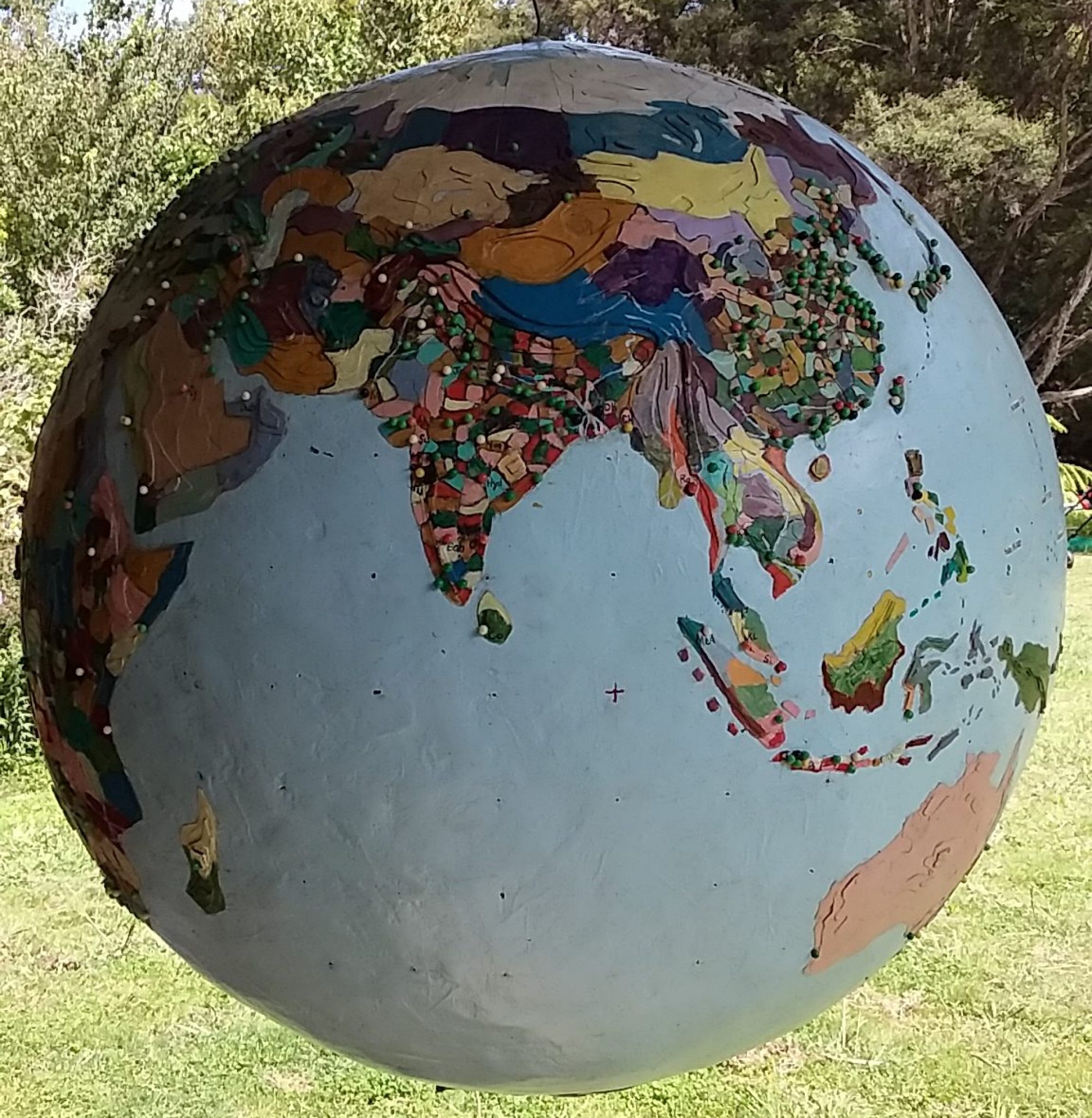Millisphere, abstract noun. A discrete region inhabited by roughly 1000th of the world population – around seven million people, but anywhere between 3.5 and 14 million people will do.
Afghanistan, with a population of 33 million, is made up of four or five millispheres. The city of Kabul, now over 3.5 million, qualifies as an urban millisphere; its economy dependent on cash flow from the US. To the northeast of Kabul is the Tajik-dominated Northern Alliance millisphere of Mazar-e-Sharif, to the southeast, the millisphere I will call “Pashtunistan”; its capital Kandahar.
There are nearly 14 million Pashtuns in Afghanistan, the majority in Pashtunistan, and another 40 million Pashtuns live across the border in Pakistan.
When my friends John and Miranda passed through on the “hippie trail” in 1971, Kabul had a population of less than one million. Travelling by bus down the Kabul river, through Jalalabad to Pakistan, they said the Khyber Pass (through the White Mountains) was a bit like the Manawatu Gorge, in New Zealand, only drier. John, who remembers seeing a lot of forts, thought the Pashtuns were a proud people.
On April 13, 2017, the United States dropped a GBU-43/B MOAB (aka the mother of all bombs) on caves in the Achin district of Pashtunistan; not far from the Tora Bora caves, where the US had briefly cornered Osama bin Laden in December 2001.
Costing $US16 million, the MOAB is equivalent to 10 tons of TNT. Reputedly dropped in retaliation for the killing of a Green Beret sergeant in the area the previous Sunday, it was part of an increased effort by US special forces in the east of Afghanistan against Sunni/Pashtun tribes targeting the Shi’a minority in Kabul.
The Achin district is almost 100 percent Shinwari, a sub-tribe of the Pashtun Kasi tribe. One such Kasi was Mir Qasi. Born in Quetta, Balochistan, Pakistan in 1964, Qasi picked up forged papers in Karachi and bought a fake green card in Miami before investing in a courier firm in Langley, Virginia where he worked as a courier driver – familiarising himself with the entrances to the CIA HQ.
In 1993 Qasi bought himself a Chinese-made AK-47 at a Langley gun shop, pulled into the CIA entrance and killed two and wounded three CIA operatives.
Qasi fled to Pakistan but was traced to Pashtunistan. With a sizable reward on his head, he was lured by informants into Pakistan, where he was captured by the FBI. Found guilty in the USA and executed by lethal injection, his body was repatriated to Pakistan. Qasi’s funeral was attended by the entire civil hierarchy of Balochistan.
The military history of Pashtunistan is a story of asymmetrical warfare. The British Empire in the 19th century and the Soviet Union in the 20th century had both come out of Pashtunistan badly bloodied, now it is the American Empire’s turn to “dominate” the Pashtuns.
In October 2013, Hakimullah Mehsud, the Pashtun chief of the Pakistan Taliban, was killed outside a mosque by a US drone in Waziristan, another Pashtun millisphere. Before his death Mehsud and his fighters had forced the closure of the Khyber Pass six times. Mesud was targeted because he appeared in a photo with the Camp Chapman suicide-bomber, Humam al-Balawi.
Named after the first American casualty in Afghanistan, “Forward Operating Base Chapman” contained a CIA facility tasked with providing intelligence supporting drone strikes inside Pakistan.
A Jordanian doctor the US thought had turned informer against the Taliban, al-Balawi had used this trust to gain access to the Camp Chapman CIA compound unsearched. Disregarding the maxim “don’t bunch up”, the CIA gathered to “debrief” al-Balawi, who then detonated the suicide vest sewn into his tunic. Casualties included the CIA base chief, Jennifer Mathews, one of the US government’s then top experts on al-Qaeda.
Pakistan took the Mehsud case to the UN Security Council reiterating that “US drone strikes constituted a violation of Pakistan’s sovereignty, were a violation of humanitarian laws and a dangerous precedent in inter-state relations”.
After the April 13 MOAB bombing, Afghan president Ghani’s representative in Pakistan called the attack “reprehensible and counterproductive” and the previous president, and Pashtun, Hamid Karzai, said: “This not a war on terror but the inhuman and most brutal misuse of our country as a testing ground for new and dangerous weapons”.
The “shock and awe” of the “mother of all bombs” was designed to intimidate the enemy. History has shown that Pashtuns aren’t easily intimidated.
